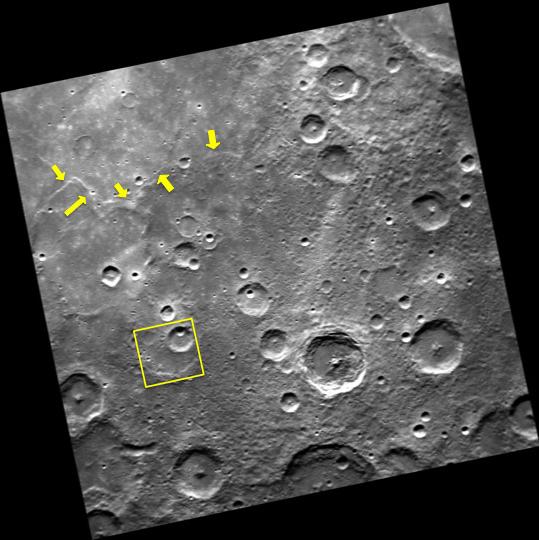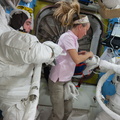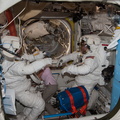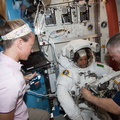
WIKIARCHIVES.SPACE
The Human Spaceflight Archive

Within the yellow box, three unnamed craters are stacked one upon another. The rim of the largest of the three is partially obscured, and the crater floor appears filled in, likely due to flooding by volcanism. Superposed on this crater is another younger crater, which has also been impacted by an even younger crater. To the north of the craters, a long scarp (yellow arrows) cuts across the region.
Information
- Taken in
- Author
- NASA/Johns Hopkins University Applied Physics Laboratory/Carnegie Institution of Washington
- Description
-
Within the yellow box, three unnamed craters are stacked one upon another. The rim of the largest of the three is partially obscured, and the crater floor appears filled in, likely due to flooding by volcanism. Superposed on this crater is another younger crater, which has also been impacted by an even younger crater. To the north of the craters, a long scarp (yellow arrows) cuts across the region.
This image was acquired as part of MDIS's high-resolution surface morphology base map. The surface morphology base map covers more than 99% of Mercury's surface with an average resolution of 200 meters/pixel. Images acquired for the surface morphology base map typically are obtained at off-vertical Sun angles (i.e., high incidence angles) and have visible shadows so as to reveal clearly the topographic form of geologic features.
Date acquired: March 30, 2011
Image Mission Elapsed Time (MET): 209960906
Image ID: 67407
Instrument: Narrow Angle Camera (NAC) of the Mercury Dual Imaging System (MDIS)
Center Latitude: -63.00°
Center Longitude: 5.11° E
Resolution: 387 meters/pixel
Scale: The yellow box is ~60.5 km (37.6 mi) wide.
Incidence Angle: 63.5°
Emission Angle: 1.9°
Phase Angle: 61.8°
The MESSENGER spacecraft is the first ever to orbit the planet Mercury, and the spacecraft's seven scientific instruments and radio science investigation are unraveling the history and evolution of the Solar System's innermost planet. MESSENGER acquired over 150,000 images and extensive other data sets. MESSENGER is capable of continuing orbital operations until early 2015.
- Created on
- Monday 8 July 2013
- Albums
- US SPACE PROGRAM / PROBES / MERCURY / MESSENGER / Annoted/Science
- Source link
- https://photojournal.jpl.nasa.gov
- Visits
- 14
- Rating score
- no rate
- Rate this photo
- License
- Public Domain
- Modified by WikiArchives
- No (original)
- Downloads
- 0
Powered by Piwigo












